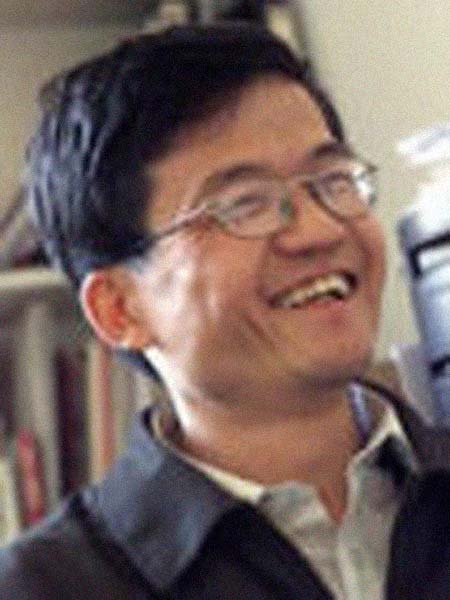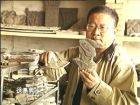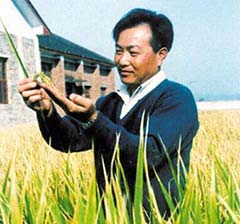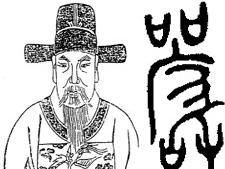陈佺 - 简历
陈佺,男,博士,研究员,博士生导师;中国科学院动物研究所细胞凋亡和癌症生物学研究组组长,生物膜与膜生物工程国家重点实验室副主任。在科学院和知识创新工程的支持下陈佺研究员于2000年组建了细胞凋亡和癌症生物学研究组,主要从事线粒体生物学和细胞凋亡机制的研究,同时进行抗癌药物筛选和化学生物学及癌症干细胞等方面的研究。近年来,研究组在国际主流杂志 JBC, FASEB Journal,Oncogene, Clinical Cancer Research, Cell Death and Differentiation和Hepatology 等杂志发表论文近30篇。申请专利5项。课题组得到国家自然科学基金委杰出青年基金,基金委重点基金,科技部973项目和科学院重点项目的支持。研究组组长现任FEBS letters杂志编委,Autophagy 和Cell Research等杂志编委会成员。
实验室现有博士研究生6名,硕士研究生3名,博士后1名。已经毕业的博士研究生8名,均在美国和国内知名实验室科研一线从事研究工作。培养硕士研究生2名,博士后5名(其中3人分别在北京大学医学院、南开大学生命科学院和四川大学生命科学院任教授/副教授)。
陈佺 - 科研工作经历
1999 - 现在 研究员,中国科学院动物研究所生物膜与膜工程国家重点实验室,生物膜与膜生物工程国家重点实验室副主任。2006 - 现在 教授,南开大学生命科学院
2001 - 2006 生物膜与膜工程国家重点实验室主任
1997 - 2002 博士后,美国俄亥俄州克利夫兰医学基金会,勒内研究所肿瘤生物学室
1994 - 1997 博士后,英国曼彻斯特大学
主要学历
1990 - 1993 博士研究生,中国科学院北京动物所生物膜与膜生物工程国家重点实验室 专业方向:细胞生物学;导师:刘树森研究员1987 - 1990 硕士研究生,中国科学院昆明动物所,专业方向:细胞生物学;导师:施立明研究员(中科院院士)
1981 - 1985 学士,湖北大学生物系,中国武汉
陈佺 - 研究领域
主要研究线粒体在细胞凋亡调控中的分子机制,探索细胞凋亡和肿瘤干细胞在肿瘤发生中的关键作用。分析线粒体动态变化(分裂、融合和线粒体自吞噬及线粒体运动)的分子调节及其在神经退行性疾病如老年痴呆和帕金森综合症发生中的作用。陈佺 - 社会任职
?《FEBS letters》, editor?《Autophagy》杂志编委会成员
?《Cell Research》杂志编委会成员
?《国外医学》(分子生物学分册)编委
?中国生物物理学会常务理事
?中国生物化学会理事
?中国细胞生物学会理事
?自然科学基金委二审专家
?生物膜与膜工程国家重点实验室学术委员会委员
?南开大学生命科学院学术委员(分)会主任
陈佺 - 获奖及荣誉
?1999 获美国癌症研究学会(AACR-AFLAC)癌症研究青年学者奖。?国家杰出青年基金获得者
?中国科学院优秀研究生指导教师奖
陈佺 - 承担科研项目
?自然基金重点(2007-2010):线粒体融合素mitofusion调控线粒体融合和运动的分子机制;基金批准号: 30630038,项目主持人;?自然基金(2006-2008) :Caveolin/caveolae对Trail选择性诱导细胞凋亡的调,基金批准号:30570419,项目主持人;
?国家杰出青年基金(2003-2007):细胞凋亡的分子机制及线粒体在细胞功能调节中的关键作用;项目主持人;
?面上项目(2001-2003):前脂肪细胞凋亡和分化的分子调节。基金批准号:30070372;项目主持人;
?面上项目(2002-2004):牵张诱导的心肌细胞凋亡的分子机制。基金批准号:30170467, 项目主持人(与北京阜外医院陈兰英教授合作课题);
?中国科学院重要创新方向(2003-2005):“细胞凋亡机制与抗癌筛选”, 项目负责人;
?中国科学院重要创新方向(2007-2009):肿瘤干细胞命运调控及其在肿瘤复发和转移中的作用,项目负责人;KSCX2-YW-R-02
?国家科技部资助“973”项目(2005-2009):生物膜和膜蛋白的结构与功能研究,2004CB720002 参加项目;国家科技部资助“973”项目(2008-2011):衰老的机制与干预的基础研究,参加项目(2007CB5074002)
?国家科技部资助“973”项目(2003-2007):细胞凋亡和分化在肿瘤侵袭和转移中的作用(2002CB513100)。子项目负责人。
?国际资助项目:2002 - 2003, 第三世界科学院特别资助项目
?2003 - 2004国际癌症研究联合会(UICC)YY Fellowship
陈佺 - 代表论著
1.Zhao.L Zhu Y*, Wang D, Chen M, Gao P, Rao G, Xiao W, Wang X, Jin H, Xu L, Sui N* and Chen Q* (2010) Morphine induces Beclin 1 and ATG5 dependent autophagy in human neuroblastoma SH-SY5Y cells and in the rat hippocampus Autophagy, in press2.Shang YL, Liu Y, Du L, Wang YL, Cheng X, Xiao WM, Wang XH, Jin HJ, Yang X, Liu SS and Chen Q. 2009 Targeted Expression of Uncoupling Protein 2 to Mouse Liver Increases the Susceptibility to LPS/GalN-Induced Acute Liver Injury Hepatology, in press
3.Huang F, Nie C; Yang Y, Yue W, Ren Y, Shang YL, Wang X, Jin J, Xu C*, Chen Q.* (2009) Selenite induces redox dependent Bax activation and apoptosis in colorectal cancer cells. Free Radical Biology & Medicine 46:1186-1196
4.Wang H, Liu B, Zhang C, Peng G, Liu M, Li D, Gu F, Chen Q, Dong JT, Fu L, Zhou J. Parkin regulates paclitaxel sensitivity in breast cancer via a microtubule-dependent mechanism. J Pathol. 2009 Jan 6
5.Zhang QY, Mao JH, Liu P, Huang QH, Lu J, Xie YY, Weng L, Zhang Y, Chen Q, Chen SJ, Chen Z.A systems biology understanding of the synergistic effects of arsenic sulfide and Imatinib in BCR/ABL-associated leukemia. Proc Natl Acad Sci U S A.2009 Feb 10
6.Zhao X, Liu Y, Ma Q, Wang X, Jin H, Mehrpour M, Chen Q. (2009) Caveolin-1 negatively regulates TRAIL-induced apoptosis in human hepatocarcinoma cells Biochem Biophys Res Commun. 378 21-26
7.Du L, Wang H, He L, Zhang J, Ni B, Wang X, Jin H, Cahuzac N, Mehrpour M, Lu Y*, Chen Q* (2008) CD44 is of functional importance for colorectal cancer stem cell. Clinic Cancer research, 14, 6751-6760
8.Nie C, Tian C, Zhao L, Petit P, Mehrpour M and Chen Q (2008) Cysteine 62 of Bax is critical for its conformational activation and its pro-apoptotic activity in response to H2O2 -induced apoptosis. Journal of Biological Chemistry, 283(22):15359-15369
9.Tian,C., Gao,P., Zheng,Y., Yue,W., Wang,X., Jin,H., and Chen,Q. (2008). Redox status of thioredoxin-1 (TRX1) determines the sensitivity of human liver carcinoma cells (HepG(2)) to arsenic trioxide-induced cell death. Cell Res, 18(4):458-71
10.Du L, Yu Y, Chen J, Liu Y, Xia Y, Chen Q, Liu X. 2007 Arsenic induces caspase- and mitochondria-mediated apoptosis in Saccharomyces cerevisiae. FEMS Yeast Res.7(6):860-5
11.Zhang K, Shang Y, Liao S, Zhang W, Nian H, Liu Y, Chen Q, Han C. 2007 Uncoupling protein 2 protects testicular germ cells from hyperthermia-induced apoptosis. Biochem Biophys Res Commun. 360 (2):327-32.
12.Liao XD, Liu,JM Du L, Tang AH, Wang SQ, Chen LY*, Chen Q* (2006) Nitric Oxide Signaling in Stretch-induced Apoptosis of Neonatal Rat Cardiomyocytes ( FASEB J, 20: 1883-1885)
13.Lei XB, Chen YY, DuGH, Yu WY, Wang XH, Qu H, Xia B, He HP, Mao JH, Zong WX, Mehrpour M, Hao XJ and Chen Q* 2006 Bak/Bax activation and mPTP opening independent cytochrome c release and apoptosis induced by gossypol which triggers Bcl-2 conformational change ( FASEB J, 20: 2147-2149)
14.Huang M, Wang Y, Sun D, Zhu H, Yin Y, Zhang W, Yang S, Quan L, Bai J, Wang S, Chen Q, Li S, Xu N. Identification of genes regulated by Wnt/beta-catenin pathway and involved in apoptosis via microarray analysis. BMC Cancer. 2006 Sep 7;6(1):221
15.Zheng YH., Tian CH, Wang HG, Chen Q. (2005) arsenic trioxide induces apoptosis through activation of Bax in hematopoietic cells Oncogene, 24:3339-3347


 新站到阅网_Xinzhandao.COM
新站到阅网_Xinzhandao.COM

 黄春平[航天系统工程管理专家] 简历 -
黄春平[航天系统工程管理专家] 简历 - 张宝贵 简历 - 名人简历
张宝贵 简历 - 名人简历 袁飞 简历 - 名人简历
袁飞 简历 - 名人简历 张庆林 简历 - 名人简历
张庆林 简历 - 名人简历 李必湖 简历 - 名人简历
李必湖 简历 - 名人简历 克莱格·文特尔 简历 - 名人简历
克莱格·文特尔 简历 - 名人简历 武之望 简历 - 名人简历
武之望 简历 - 名人简历 埃拉托塞尼 简历 - 名人简历
埃拉托塞尼 简历 - 名人简历